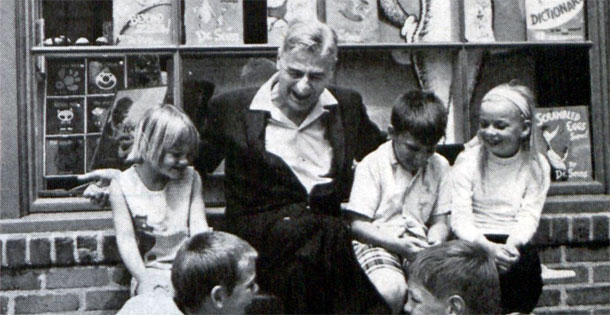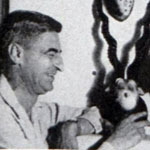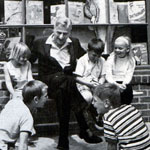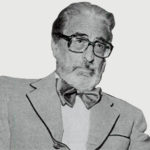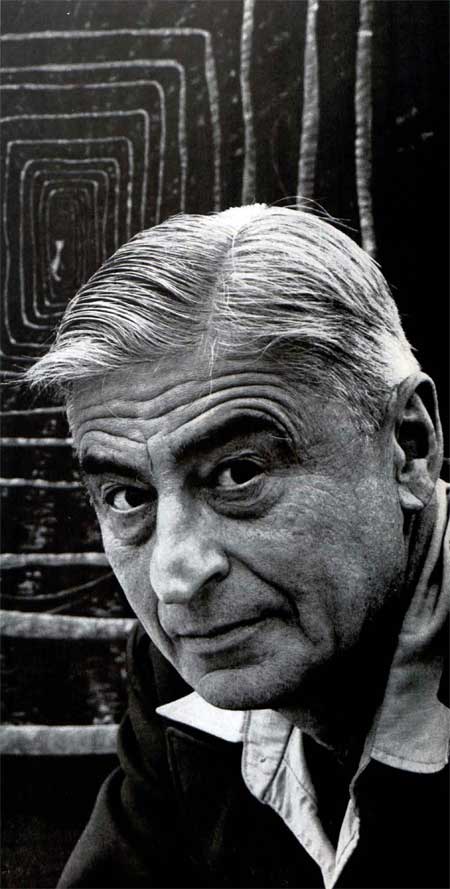
He was saving his real name — Theodor Seuss Geisel — for serious work, the Great American Novel. So he signed his cartoons with aliases: Quincy Quilp. Dr. Xavier Ruppzkopff. Dr. Theophrastus Seuss. But “he finally settled on just plain Dr. Seuss,” writes Robert Cahn in The Saturday Evening Post’s first interview with Geisel in 1957 — 30 years after Geisel’s first cartoon appeared in the magazine in 1927.
After that first interview, the Post would check in with the author every 10 years until 1977. And in the 50 years after his first cartoon appeared in the Post, Dr. Seuss would write an Academy Award-winning documentary, find an ending for How the Grinch Stole Christmas, create phonetics primers, start a television career, and scratch out a couple of rock operas.
As for that Great American Novel, Dr. Seuss told the Post in 1965: “It ran to two enormous volumes, and when it wouldn’t sell I condensed it into one volume. When that didn’t sell, I boiled it down into a long short story. Next I cut it to a short, short story. Finally, I sold it as a two-line gag. Now I can’t even remember the gag.”
Take a look back at the unforgettable Dr. Seuss:
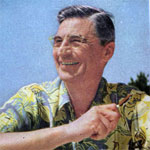
The Wonderful World of Dr. Seuss
- By Robert Cahn
- July 6, 1957
- In the summer of 1957, Theodor Geisel, aka Dr. Seuss, had just published a children’s primer called The Cat in the Hat, and his newest story, How the Grinch Stole Christmas, was ready for publication later that year. It was during this interlude that Geisel granted his first Post interview with Robert Cahn, revealing why he became Dr. Seuss, the simple reason he draws the way he does, and the undeniable effect his wife, Helen, has had on his career.
Inundation of Dr. Seuss
- Editorial
- September 7, 1957
- Dr. Seuss writes in to tell the Post he’d been flooded with attention and had to go into hiding following the first interview in July.
Dr. Seuss: ‘What am I Doing Here?’
- By Robert Jennings
- October 23, 1965
- In the autumn of 1965, children around the world were enjoying Dr. Seuss’s newest book, Fox In Socks. And in an interview with Post writer C. Robert Jennings, Dr. Seuss himself — 61-year-old Theodor Geisel — reminisced about the events of his own childhood that led him to become the author and illustrator that generations of parents and their children would come to know and love.
Dr. Seuss at 72 — Going Like 60
- By Don Freeman
- March 1, 1977
- In a Post interview from 1977, Theodor Geisel — better known to the world as Dr. Seuss — looks back on his life and legacy, musing on his successes, his failures, and the sometimes unbelievable reactions readers have had to his work. But even at 72, Geisel has no plans to slow down. “People of my age are all retiring,” he says, “I’ve got more things I want to do now than ever.” Those plans go beyond bookmaking and into movies, television, and even, of all things, a rock opera.
Become a Saturday Evening Post member and enjoy unlimited access. Subscribe now
